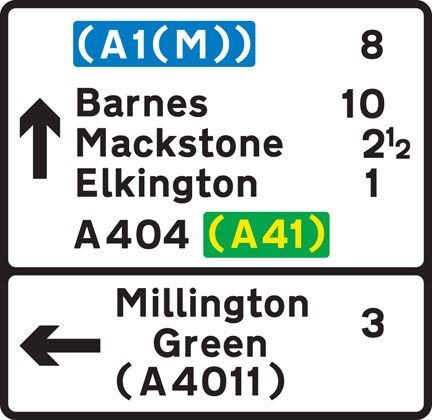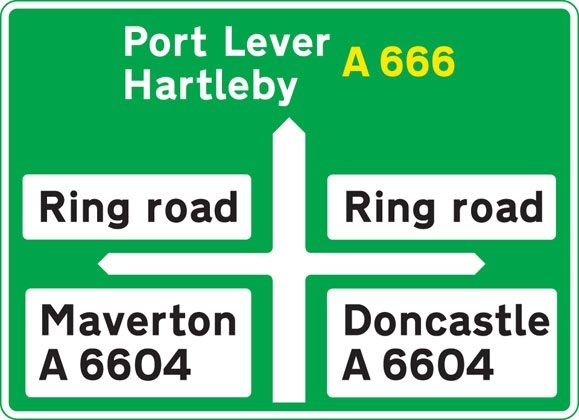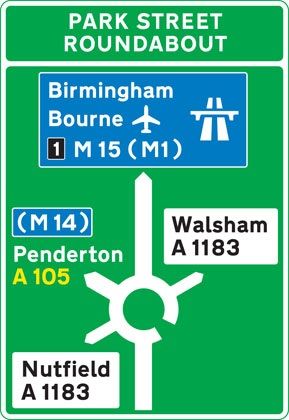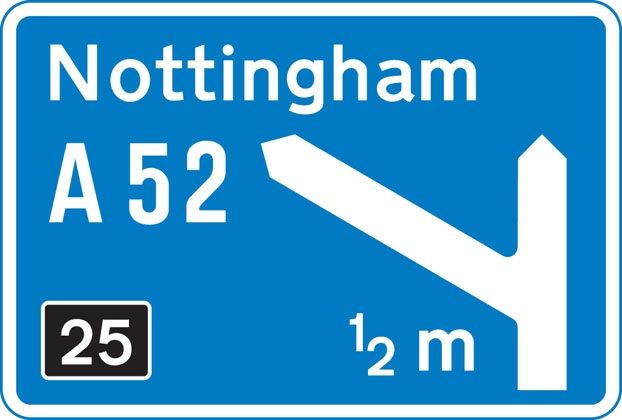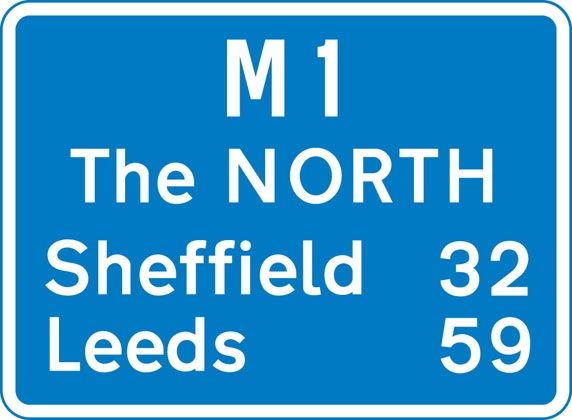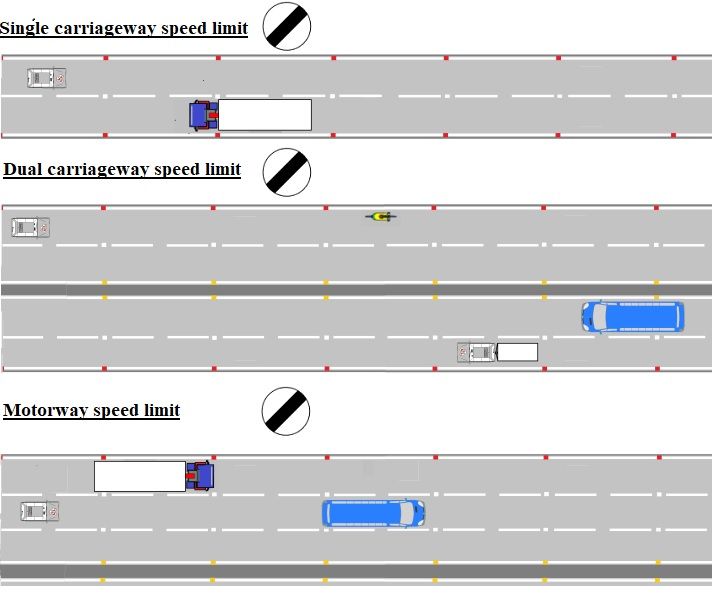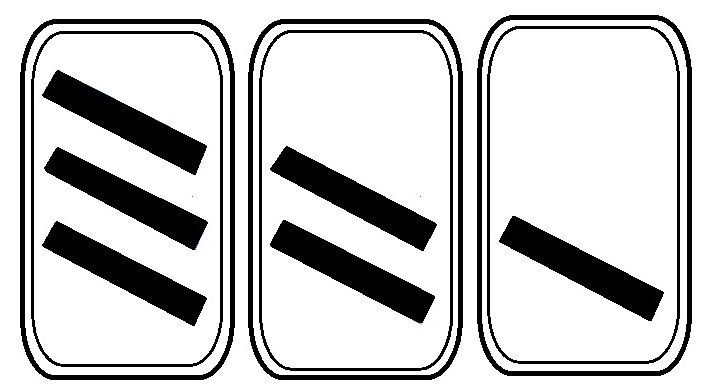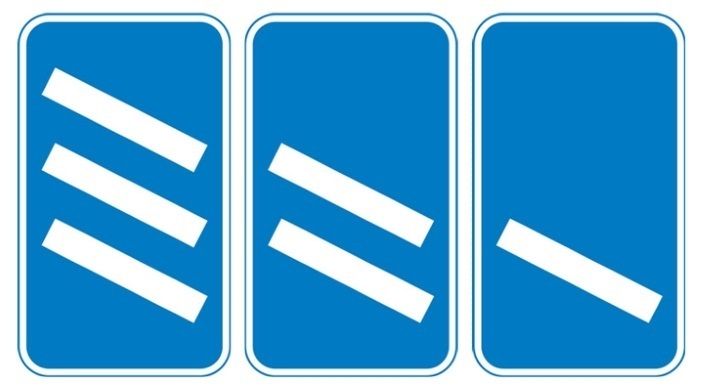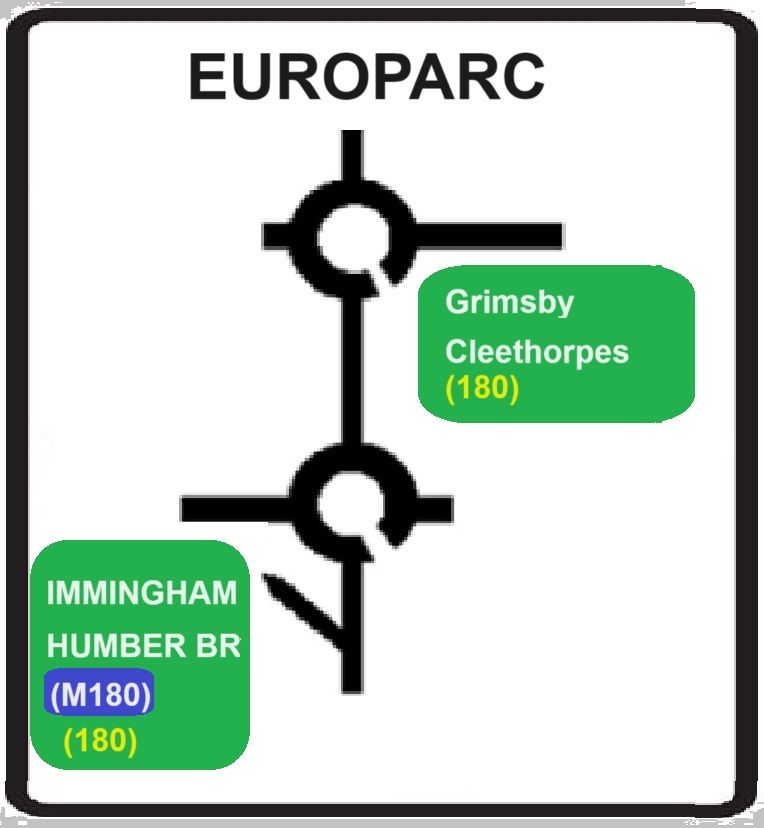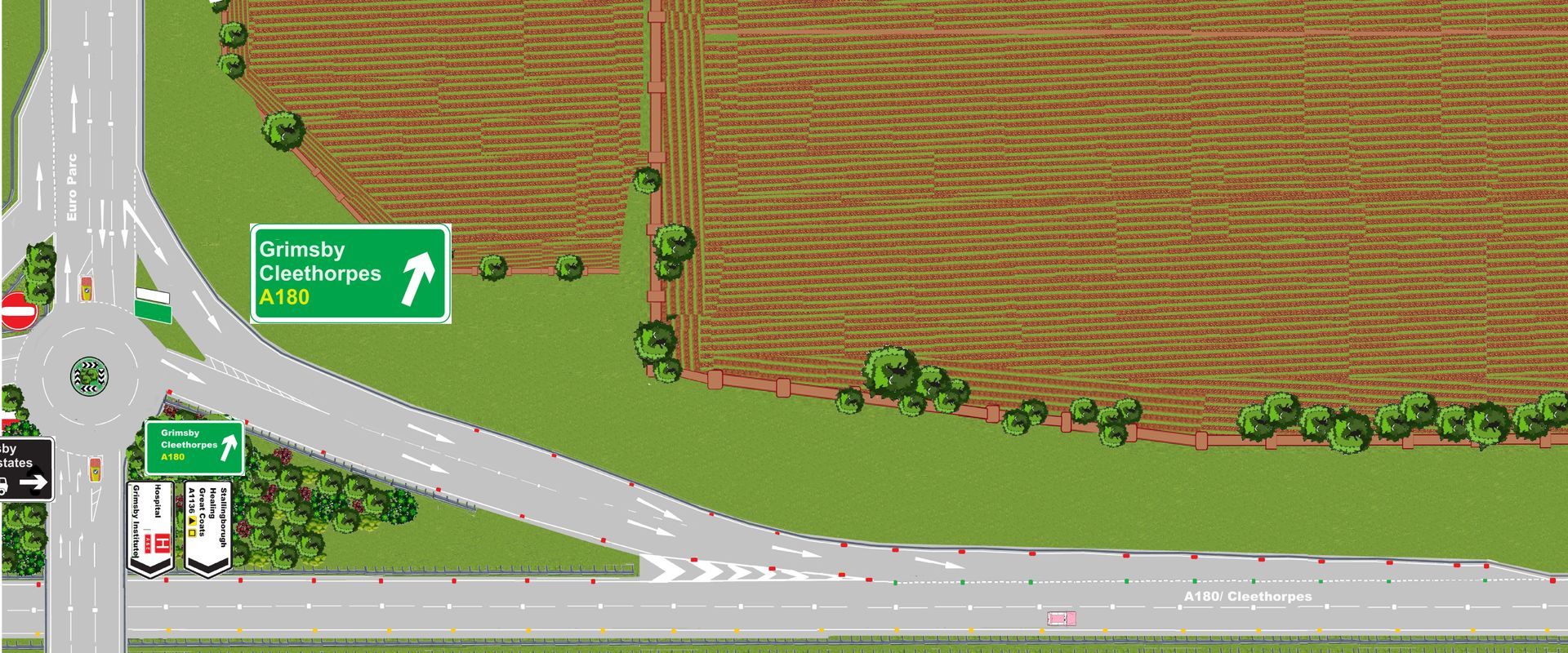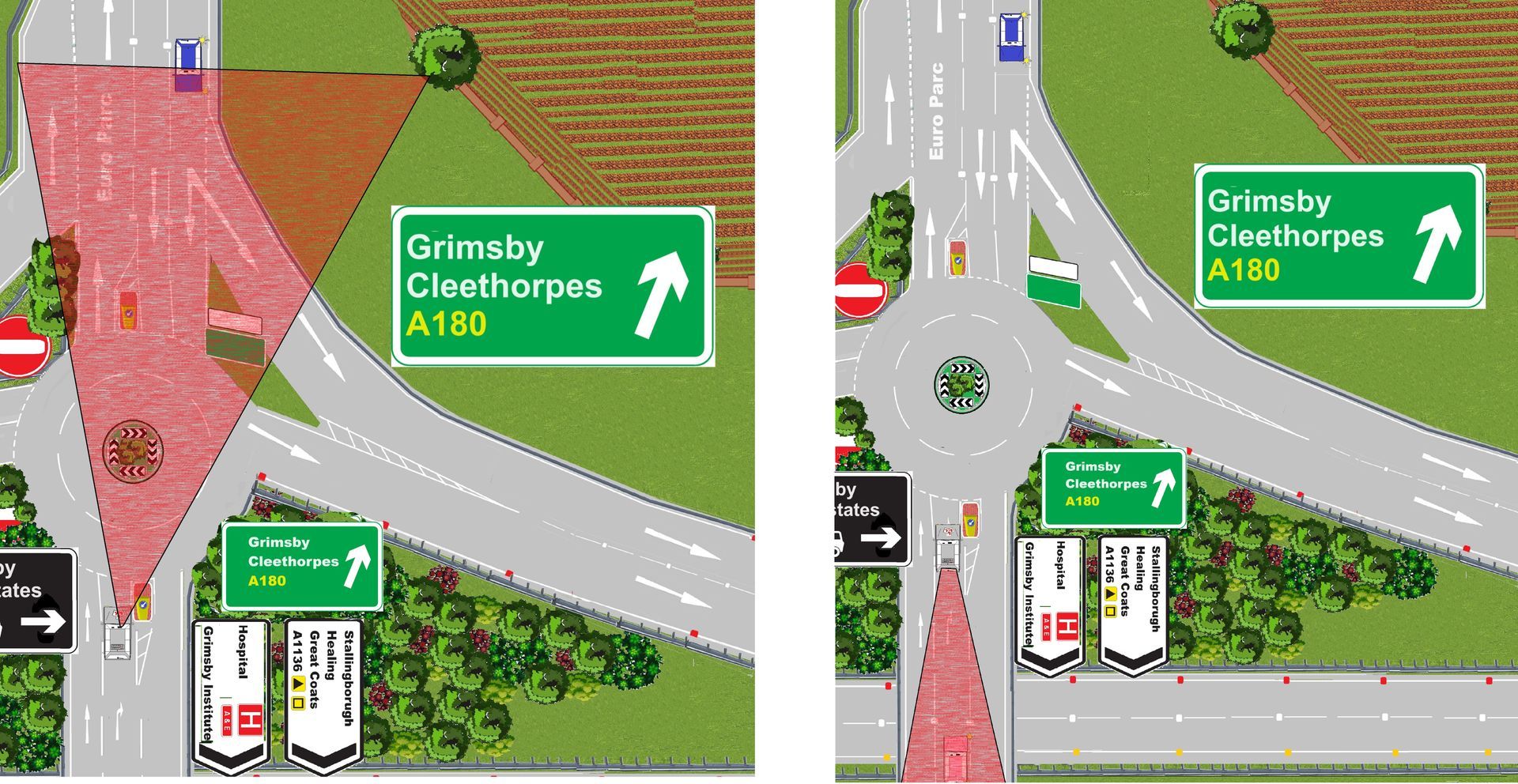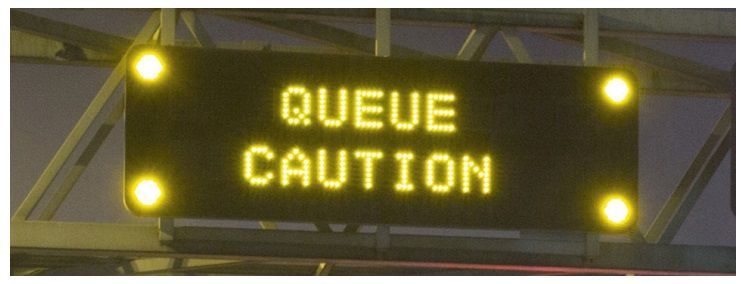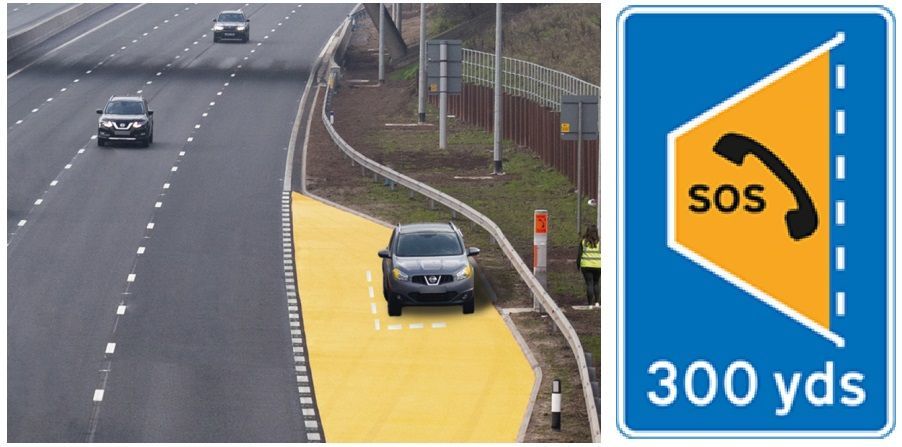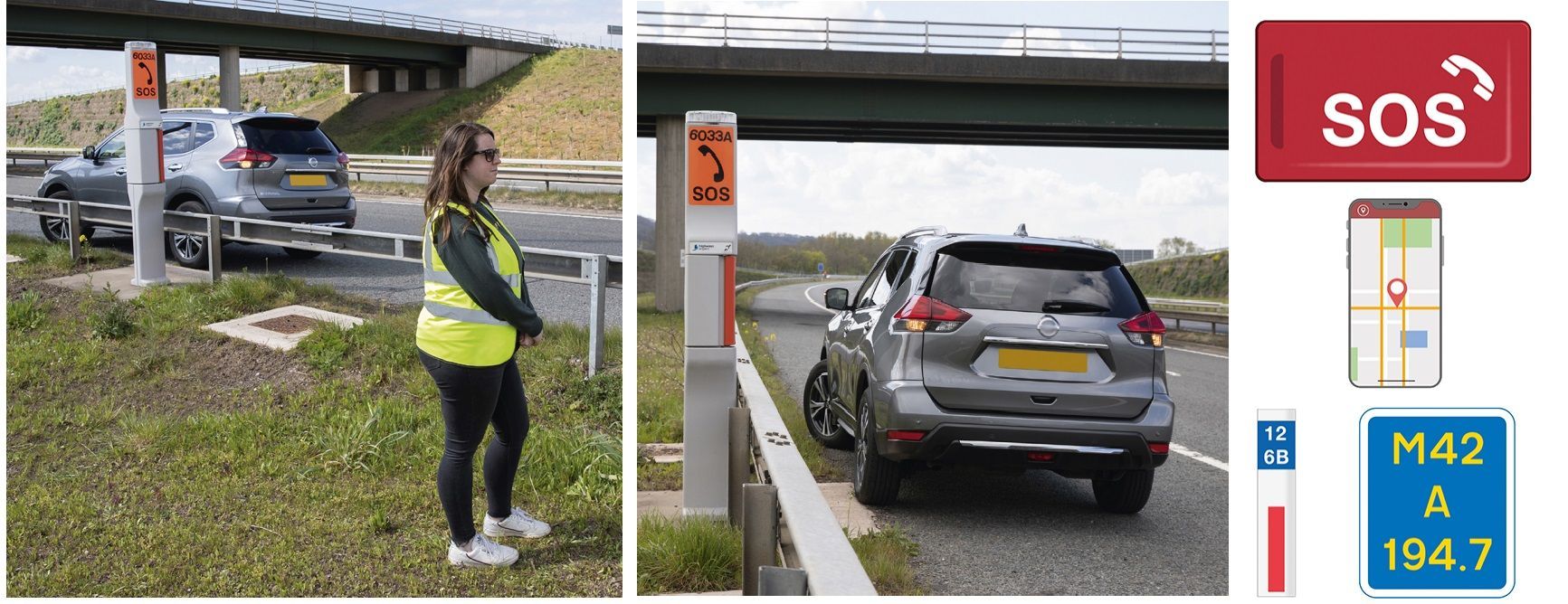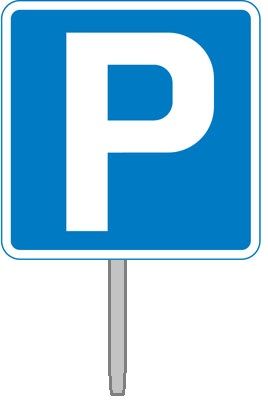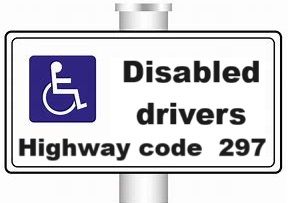Dual carriageways
- Negotiating crossroad and decide the best technique "Nearside to Near side or Offside to Offside
- Meeting, overtaking, adequate clearance when overtaking stationary/slow moving vehicles, hold back and maintaining a two second gap
- Traffic calming measures and 20 zones
- Hill and angle starts
- Busier and more Complex junctions, roundabouts/mini roundabouts and traffic lights
- pedestrian crossings
- Awareness and planning
- Town/City location
- Full talk through
- Prompt
- Independent
Speed limits
On a provisional licence you are legal to drive on a motorway accompanied with a fully qualified driving instructor but can only drive on an A road accompanied with a friend or family member as long as you are insured.
On driving lesson's you will potentially get up to speeds of up to 60/70MPH (that's if you feel comfortable too), if you only get up to 50/55MPH that is acceptable however your instructor will build your confidence to improve nerves to build your speed.
Towing a trailer
Once you have passed your practical (driving) test you are legally allowed to tow trailers and caravans up to 3,500KG (law changed December 2022).
Speed limits
Here is a speed limit tariffs that are in the highway code, you will have to demonstrate you can control your tuition vehicle at speeds up to 70MPH and then entre lower speed of 20, 30, 40+MPH in town areas. You will trained to adapt your speed to obey the set speed limits of the roads you entre.
Speeding can get you a minimum of 3 points on your licence or if you exceed the limit may even be banned.
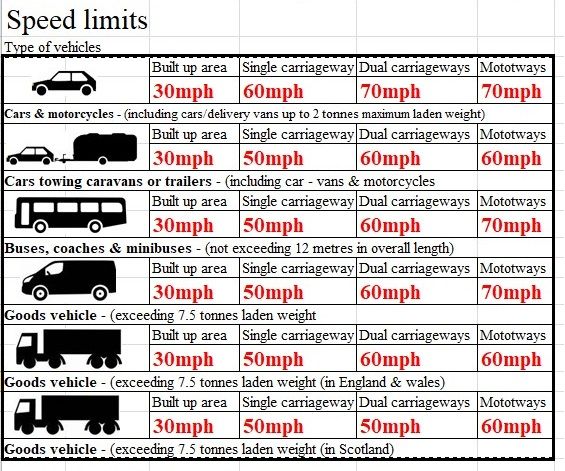
New drivers
Your licence will be cancelled (revoked) if you get 6 or more points within 2 years of passing your test.
Points on your provisional licence
Any penalty points on your provisional licence that have not expired will be carried over to your full licence when you pass your test. However, your licence will be cancelled if you get any further penalty points that take you up to a total of 6 or more within 2 years of passing your driving test.
Annex 5.
Penalties and The Highway Code
Parliament sets the maximum penalties for road traffic offences. The seriousness of the offence is reflected in the maximum penalty. It is for the courts to decide what sentence to impose according to circumstances.
Bellow's link takes you to the Annex 5 in the highway code.
Colour of the information signs
As a provisional (learner) driver it is your responsibility when being accompanied with a friend or family member to understand and know road signs and road markings. On a A and B roads including dual carriageways the road directional signs will be green and on a motorway they will be blue.
You are allowed to drive on a motorway with your driving instructor but not with family/friends.
Colour of road signs
Non primary - black border and a white back ground sign
Primary - Green boarder and a green back ground sign
Motorway - Blue boarder and a blue back ground sign
Reflective studs (cats eyes)
What are reflective studs? There are 4 different colour reflective studs.
The question is, do you know where you find them on a dual carriageway/motorway and what do they mean?
- Red reflective studs, they represent the hard shoulder area.
- Amber reflective studs shows the central reservation of a dual carriageway or motorway
- Green reflective studs, they show the safe area's for example slips road's and parking area's
- White reflective are between the white centre lines
- White reflective studs, you would find separating lanes (ether down a street, single/dual carriageway or motorway
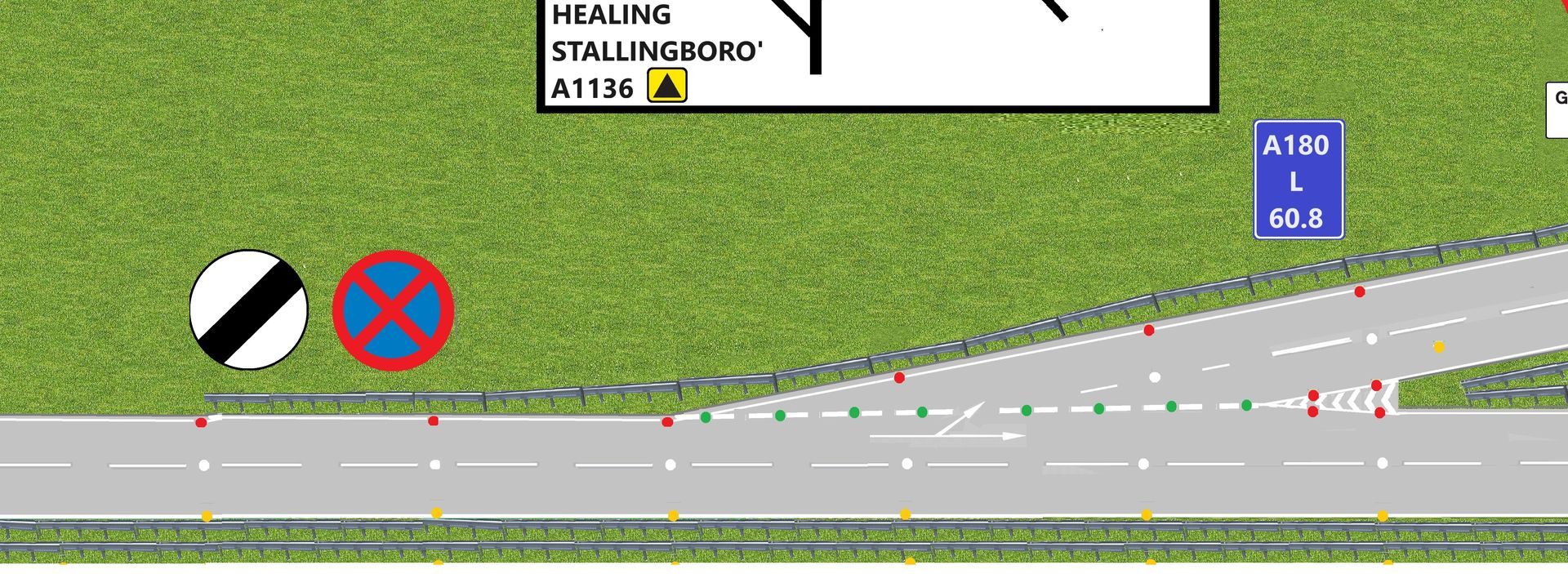
Making progress on dual carriageways
Your objective on a dual carriageway is to match the speed of the road, make progress and overtake a slower moving (cyclist) vehicle, a broken down vehicle or intending to turn right. A single carriageway and a dual carriage way (national speed limits have different speed limits.
Driving too slow will cause you problems if you are turning right on a dual carriageway on a 'A' road.
Never break the two second rule when driving, identify the slower moving vehicle in front of you and plan to over take safely by always knowing what is in front, behind you and what's is overtaking you.
Before changing lanes or overtaking
When planning to overtake on a dual carriageway/motorway you would constantly know what is behind, in front and constantly scanning for any dangers (every 4/10 seconds), then before you overtake use your L.A.D.A & hazard routine's at least 3 times -
One to get ready to overtake
two actually overtake
Three to move back into the left hand lane
Diagram 1 - The purple vehicle is driving slower than you, so your objective is to overtake if safely.
Diagram 2 - The yellow vehicle in your blind spot as you have not committed to the overtake and the yellow vehicle in lane two has now caught you up so you can no longer overtake the purple vehicle safely.

When to move back to the left after you have overtaken
On motorways driver's overtake and instantly cut back into the left hand lane and do not leave the correct safety gap.
The correct procedure is to overtake and keep in the lane you are in until you can see the vehicles head light's in your rear view mirror then move lanes.

Only a fool breaks a 2 second rule
Always maintain your safety gap and only overtake when it is safe to do so. When two vehicles travelling towards each other at 30mph the impact speed is 60mph, when travelling at 60mph this will be a 120mph impact speed.
Kill your speed not an innocent bystander.
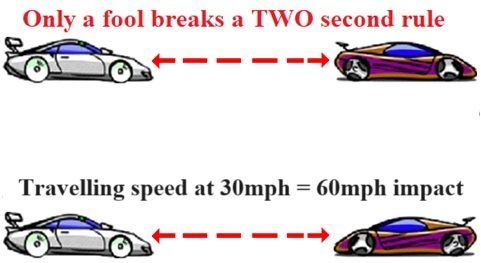
Acceleration and deceleration lanes (slip roads)
Deceleration lane
A slip road is the term commonly used to describe an acceleration or deceleration lane that helps to maintain the flow of traffic on the dual carriageway by providing a safe way to join and leave a fast flowing road.
Entering and exiting acceleration and deceleration lanes could be on your driving test (depending on the test route you get) so your instructor will cover
acceleration and deceleration lanes
incorporate the hazard routine to exit and entre on a slip road.
Anticipation and planning
Anticipation and planning is key to safety on any road but even more important on a dual carriageway/motorway. Always overtake in good time and always ensure you check your
- MIRROR (every 4/8 seconds)
- SIGNAL (your intention)
- MANOEUVRE (lane change smoothly)
Ensure you do a final
BLIND SPOT CHECK before changing lanes.
Approaching a slip road
On the approach to any slip road you will have an advanced 1/2 mile sign, on the motorway sign you will also have the junction number, these are helpful to emergency service if for example you have broken down.
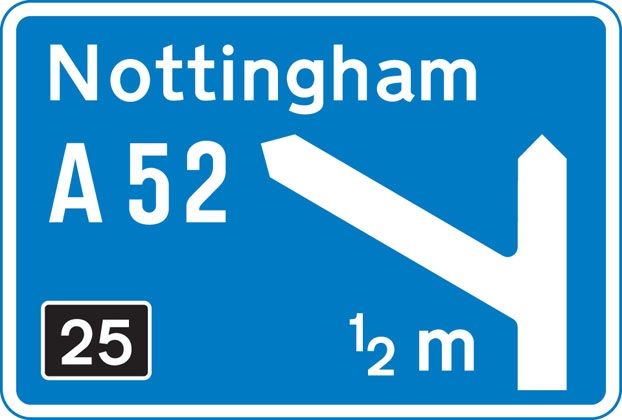
Count down markers
On dual carriageways and motorways there will be three counts down markers (which are 100 yards apart) on the approach to the deceleration (slip road). On different roads you will see three different coloured signs, the highway code explains different location you will find them. Below explains the meanings:-
White-backed markers with black bars on other routes (for example town/city area, roundabout and traffic light signs also have a white background and black writing)
Green-backed markers may be used on primary routes (for example all 'A' route signs have a green back ground sign with white writing on it.
Blue-backed markers with white bars on motorways (for example all 'M' route signs have a blue back ground sign with white writing on it.
The different colour signs help driver know what type of road they are driving on and remember
ONLY a learner driver can go on a MOTORWAY accompanied with a
DRIVING INSTRUCTOR.
When to start your hazard routine when leaving a dual carriageway/motorway and entering a slip road
On your driving lesson you will cover when to start your hazard routine when leaving and entre dual carriageways slip roads (using the road signs as reference points).
In this example we (as in instructors) and an examiner could ask you to follow the signs for Healing and Stallingbourgh. Below are the first two signs are you looking for and then follow the direction instruction to Healing for example. Do not forget this is a Grimsby test route and you may be asked to follow different signs if your for a different town or City.
First of all look for the 1/2 mile sign then the three count down markers that are 100 yards apart.
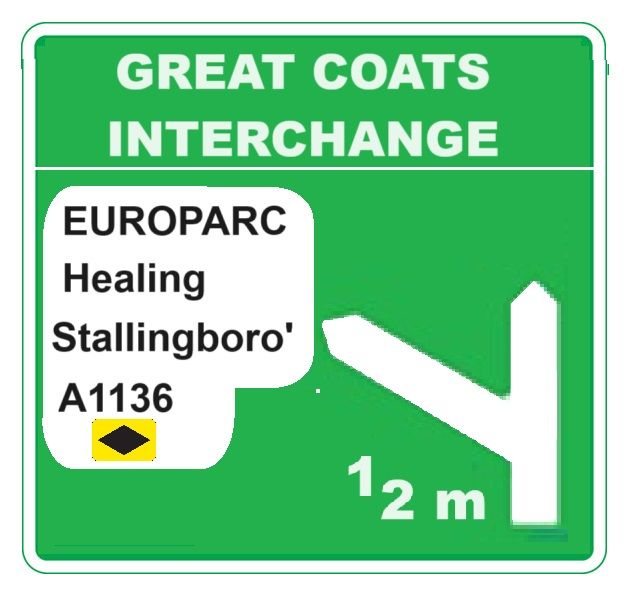
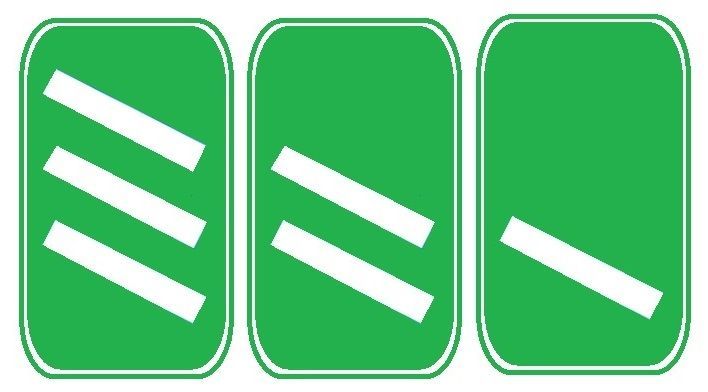
An effective time to start your hazard routine when leaving at a slip road is at count down marker 3 and no later than count down marker 2 as this will give the vehicle's behind information that you are leaving at the slip road.
Slowing down strategy
When leaving a dual carriageway try to avoid reducing your speed until you have entered the slip road (unless its unsafe to carry on, for example an accident or roadworks in front of you forcing you to slow down early).
Constantly use your L.A.D.A routine and always know what's:-
- In front
- Behind
- And over taking you
And always maintain a two second gap with the vehicle in front (and behind).
At count down marker number 3
Check your:-
Mirrors (left).
Signal (left).
Unless there has been an accident or a slow moving traffic queue don't reduce your speed until you are in the slip road (unless there as a hazard in the slip road area).
Entered the slip road (deceleration lane)
(Because you are following directional signs you could be faced with another slip road, Y junction or roundabout (on motorways you could also approach traffic light system), so ensure you look and follow the appropriate road markings and sign).
Now you have left the dual carriageway and in the slip road check:-
Mirrors (All)
Signal (take it off)
Now follow the directional signs for:-
- Great coats
- Healing
- Stallingbough
- A1136
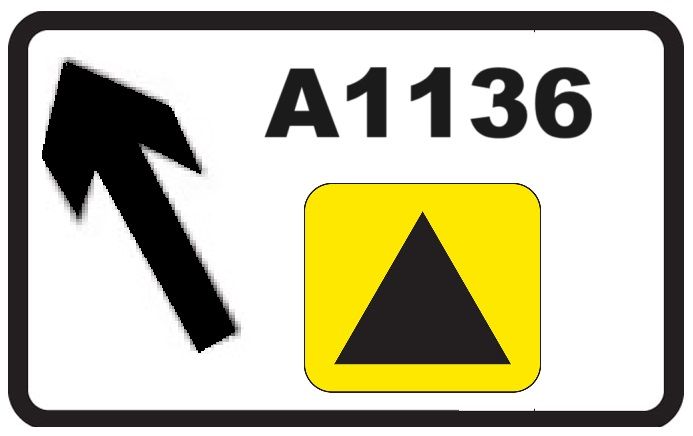
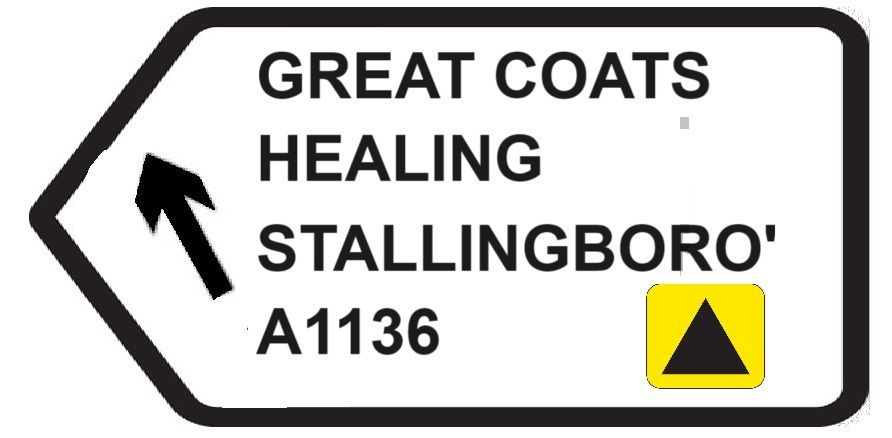
Your objective on your driving (practical) test will be to follow directional signs. The below diagram follows the signs to great coats/Healing and stallingbough. We will using the second slip road and not the roundabout to turn left as this is what the road signs dictate.
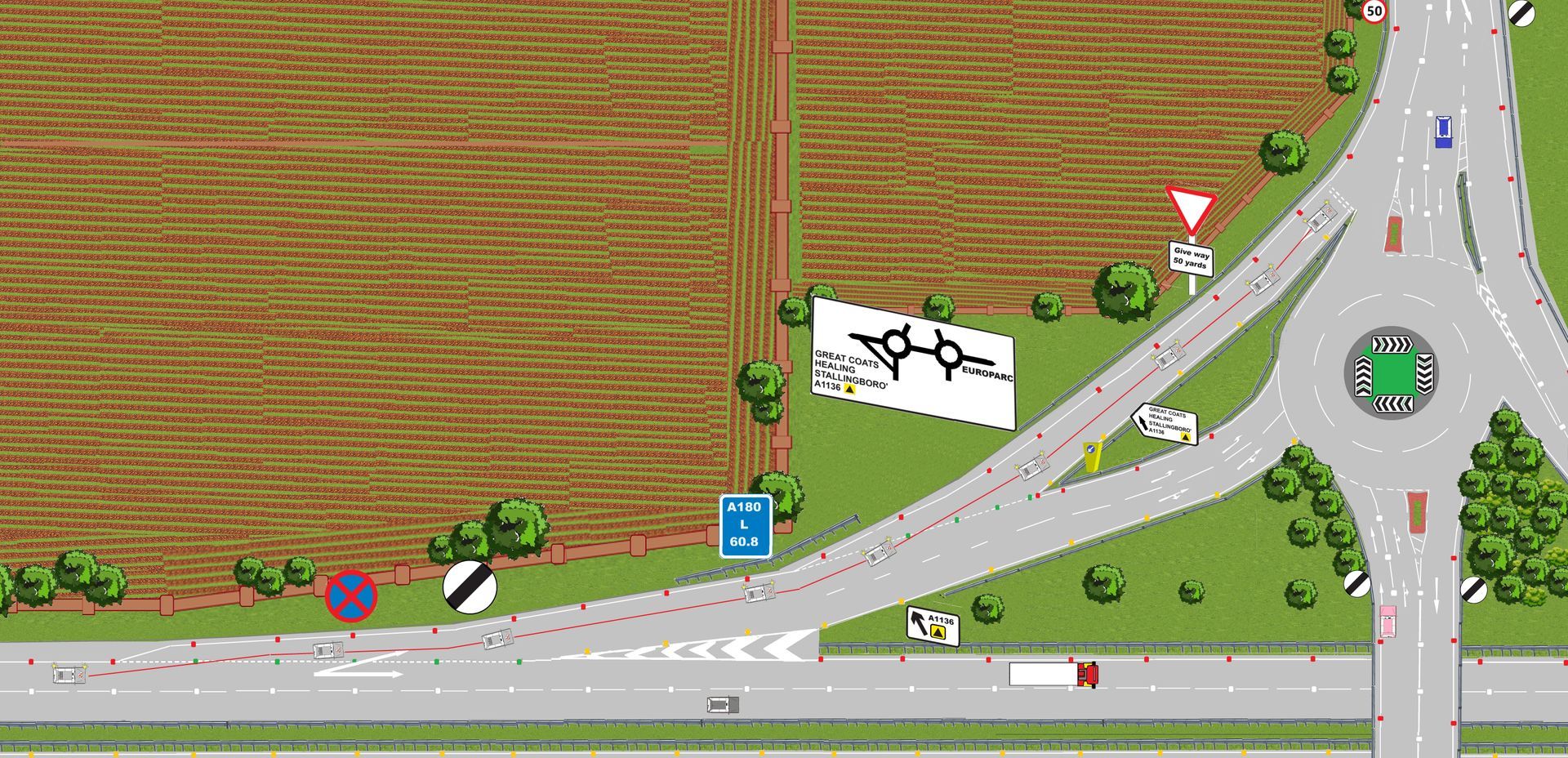
Timing of speed and gear
Speed (reduce by easing of the gas and apply brakes if needed)
Gear (selective down accordingly 5th or 6th to 4th gear).
Reduce your speed to roughly 45/50 MPH and 4th gear by the time you get to the reference of the blue road sign.
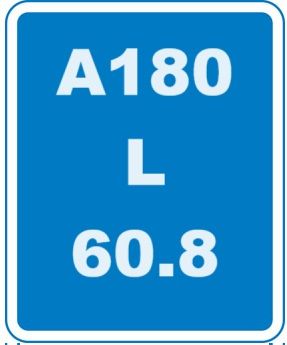
Second slip road
Now remember you are following the signs to Healing/Great cotes & Stallingbrough so once you get to the roundabout sign restart your M.S.M/P.S.G routine
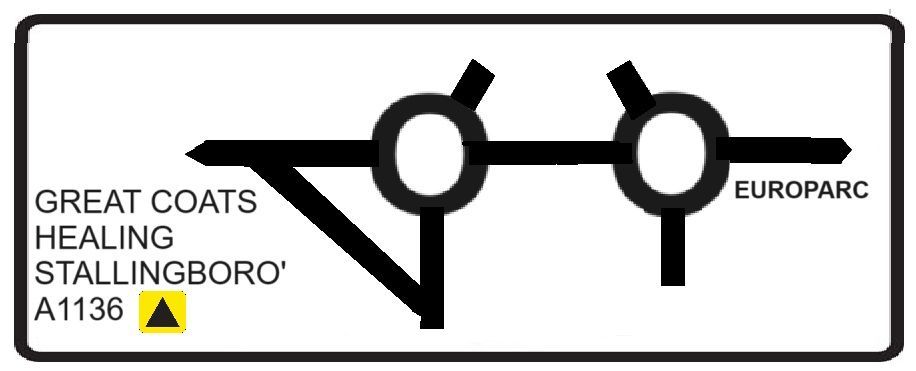
Key to the speed and gear in the 2nd slip road/Y junction
Just before you get to the 50 yd sign is to be at 20/25mph and go down to second gear, this will give you the correct speed and gear to L.A.D.A to what is behind you and approaching from your immediate right (from the roundabout) to see if its is safe to emerge or if you need to slow and stop and wait for a gap.

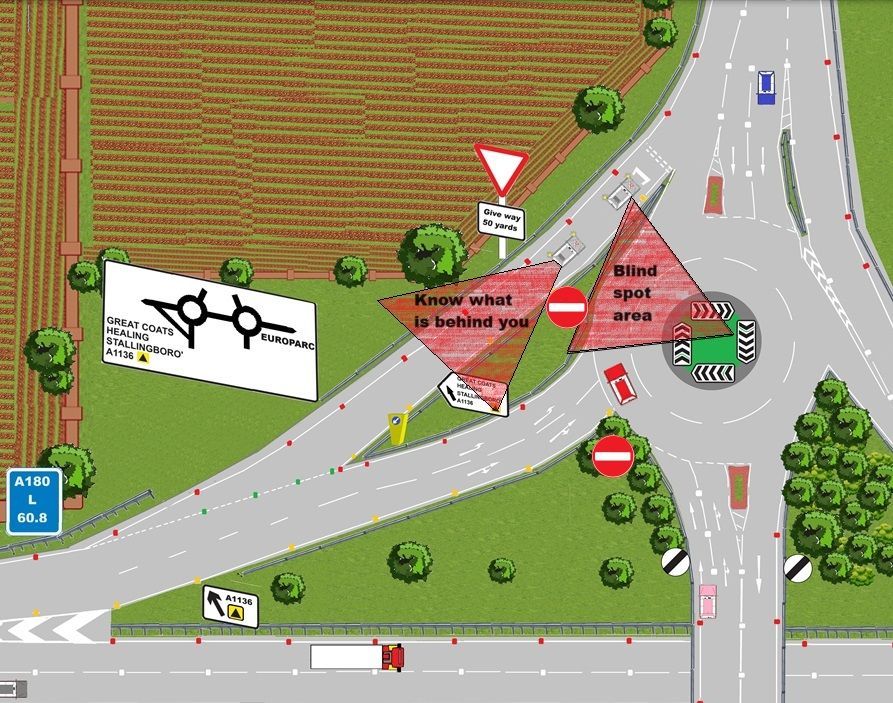
Accelerating lane
Once you have covered how to leave a dual carriageway follow directional signs you will then be coached on how to use the M.S.M/P.S.G routine and negotiate an interchange system and an acceleration lane, merging into faster moving traffic on a dual carriageways.
Accelerating lane
When going down an accelerating lane (to join a dual carriageway) build your speed up in the left lane (as left is best) and allow fast moving traffic the opportunity to overtake you and not undertake you.
You were marked on: Positioning
normal driving - your position of the car when driving such as not driving too close to the pavement or lines
lane discipline - your ability to maintain your position within the lane
You needed to show you can keep your car correctly positioned on the road, staying within the correct lane, without driving too close to the lines.
Examples of faults
Some of the most common faults for this area include:
- Driving too close to the pavement, putting pedestrians at risk
- Driving too close to the centre of the road, putting other road users at risk
- Driving for too long in the right hand lane of a dual carriageway, for no reason
- Straddling lanes causing issues for other road users
Your examiner may have explained the specific details of any faults you made.
How you can improve in this area
If you made faults in this area during your test, or if you want to
improve in this area, you should:
check rules 135 and 137 of the Highway Code
read pages 158 to 161 of ‘The Official DVSA Guide to Driving: the Essential Skills’ (2022 edition)
If you need to rebook the test, spend time practising this skill with your driving instructor or supervising driver. You could work on:
identifying lane markings on the road
changing lanes using mirrors - signal - manoeuvre (MSM)
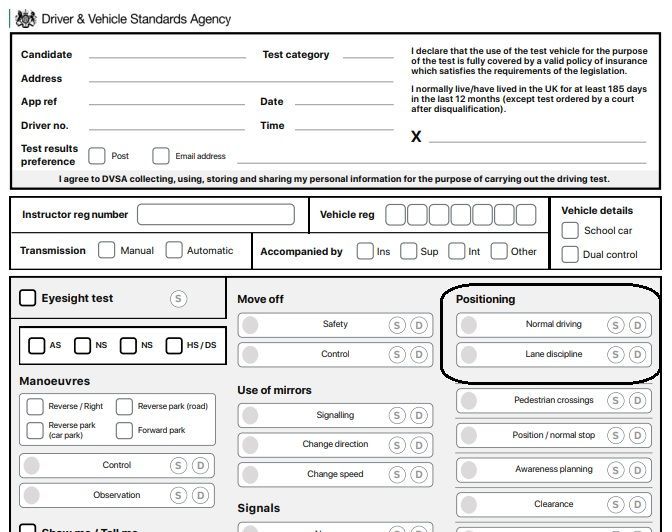
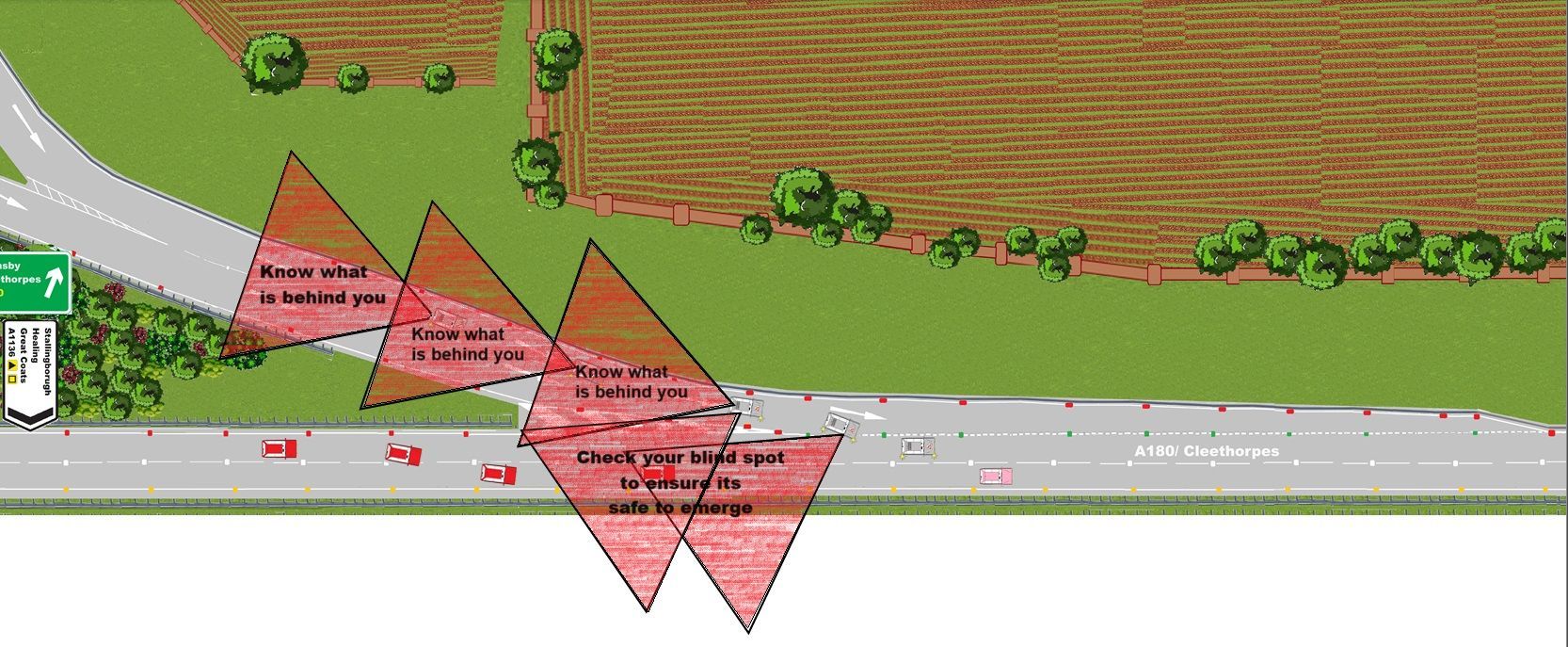
- Look too identify the slip road sign
- Asses the length of the slip road you are travelling on
- Decide and determine what speed you need to build up too
- Act accordingly with gaps there are in the traffic on the dual carriageway.
Once you have practiced different acceleration and deceleration lanes (slip roads) you will then be given a challenge to follow signs and work an interchange.
This sounds again daunting but all it is, is you tackling two roundabouts and between the two roundabouts is a bridge that goes over the dual carriageway/motorway. The sign on the approach to the first roundabout looks like the below sign.
Following the signs to the A180, Cleethorpes and Grimsby
Let’s break down the above sign
First roundabout
Before the first roundabout there is a slip road to entre the M180/Immingham and Humber bridge
- At the roundabout you CAN NOT turn right as their is an NO ENTRY sign as this will take you down the wrong side of the slip road.
- You CAN however go all the way around the round about and go back the way you came from
We are are going to go straight ahead and following the signs to Cleethorpes, Grimsby,
A180
and follow the Grimsby industry estate
The TWO biggest mistake learner drivers make is that:-
- They DO NOT look or even read the roundabout directional sign
- Then want to just turn right at the first roundabout! This takes you down the wrong side of the dual carriageway.
Once you are over the first roundabout there is a bridge (Interchange) that goes over the dual carriageway.
Then at the second roundabout you turn right and entre the slip road to merge onto the A180.

At the second round about you have to look ahead and plan with:-
- Other vehicles using the slip road from the EUROPARC
- Vehicles behind you going the same direction as you
Remember it is equal priority when travelling down the slip road, its all about having the correct lane (position) so no one gets under taken.
The observations you will need is what is:-
- What is behind you and following you as your negotiating the the second roundabout
- What is approaching the Europarc slip road
Strategy
As you approach the second roundabout are going need to look and plan ahead with what is coming towards you and what is behind you also going the same way as you (toward the A180).
How to merge onto a Dual Carriageway
Once you have entered the slip road you now have the task of merging onto the main dual carriageway, this is going to be a daunting challenge for you but lets put you at ease and walk you through it.
- To merge safely, you need to match the speed of the traffic already on the road, 40mph is too slow so you will need to aim to build your speed up to 50/60mph
- YOU can but try not to use the hole of the slip road to get your speed up so you can merge safely onto the dual carriageway (your instructor will give you strategy's to use)
- Keep checking your mirrors and blind spots – ensure you keep your steering wheel straight when you are turn of your head as you don’t want your vehicle to swerve lanes (practice makes perfect)
- When you are about halfway down the slip road, check your right mirrors and signal, this will alert other vehicles on the dual carriageway and this will be helpful and if it is safe for them to do so will change lanes to make space for you on the road
- As you get closer to the dual carriageway you may need to change your speed depending on how quickly the traffic is flowing that is already on the dual carriageway (or motorway) – you may need to speed up or slow down to merge safely
- When you are travelling down the slip road, you’ will need to plan an entry point onto the dual carriageway – (before you pass to the hatch markings and before the red studs go green studs) use your interior mirror, offside mirror and blind spot to your right a couple of times
- Look for a good-sized gap that you can slip into on the dual carriageway/motorway
- Before you entering the dual carriageway/motorway make sure you do final interior and right door mirror and right blind spot checks
- DO NOT drive over any white chevron or RED reflective studs when join the dual carriageway/motorway
- DO NOT get to the end of the slip road and stop (no planning)
- Once you have emerged on the dual carriageway/motorway and in the left hand lane of the dual carriageway/motorway cancel your signal
- Make progress and keep a TWO SECOND GAP FROM THE VEHICLES already on the dual carriageway
Click on the pictures for the highway code rule.
Hard shoulder
Stopping on the motorway
Breakdown and incidents
Parking up in a parking area
If you have decided to stop at a parking place look for a passing place sign, before the parking place you will have a 1/2 mile sign to alert you to the parking area. Stay in the left lane (slow lane) and use you
M.S.M routine in good time so vehicles behind knows your intension and can make progress past you.
Why would you need to stop on a M or a A road?
When you’re traveling on a single/dual carriageway there will be times when you will need to stop for a mechanical issue or just for a little rest. When aiming to park up in the designated parking place you need to think about your overall stopping distances (70MPH you need 24 car lengths, 315 feet and 96 metres), ensure you look, assess, decide and act safely with what is behind you, ensure your M.S.M routine when slowing down is timed correctly so traffic behind knows your intension to slow down and they can react accordingly. Ensure you know how big the parking area is and what else is parked their.
In the event of you breaking down
If your vehicle suddenly break down (this will be a shock) the worse thing you can do is panic as there will be probably be traffic all around you. Think about the routine you always use "M.S.M". Check your mirrors then put on your hazard warning light (to warn traffic behind that you have an issue) ease off the gas and if possible aim to stop in a parking place. If this is not possible stop on the hard shoulder and follow the highway code rules.

Merging in to fast moving traffic
Once you are ready to continue your journey you need to merge back on to the single/dual carriageway safely. Prepare to go and activate your right indicator and then wait for the oncoming vehicles to react to your indicator and once they have moved to lane two and three. Start to drive and merge safely onto the first lane and make appropriate progress to match the speed of the road.

Tyre blow out
In the event of a tyre blow out keep your hands on the steering wheel to control the vehicle, if necessary steer into the skid and ease of the gas pedal and move to the left hand side (hard shoulder). Other drivers will see what's happening and will safely pass you.
Lane closure's or a broken down vehicle
Road works are constantly on going so look out for signs warning you of this issue and looking ahead for any broken down vehicle that you will need to plan with and avoid.
Incidents/roadworks
Reflective studs (cats eyes)
White reflective studs, you would find separating lanes (ether down a street, single/dual carriageway or motorway
- Red reflective studs, they represent the hard shoulder area.
- Amber reflective studs shows the central reservation of a dual carriageway or motorway
- Green reflective studs, they show the safe area's for example slips road's and parking area's
Long and short slip roads
Village slip roads leading on to dual carriageways can reach speeds of up to 70 mph, so you can imagine the difficulty in judging potential gaps in the traffic that is already on the carriageway that you need to emerging into from a slip road.
Lengths of a slip roads
When exiting villages you would have to use a slip road and join a carriageway, you could be faced with ether long slip road of over 16+ vehicles long or as short as 6 vehicles long, the view on the approach can be open or closed so early observations and planning is necessary to merge safely.
Long slip road
On a long slip road you have time to entre the slip road and build your speed up and merge on to the carriageway, when you can see its safe to emerge ensure you check your mirrors put on a signal and manoeuvre when its is safe (do not forget to check your blind spot just like a a dual carriageway/motorway.
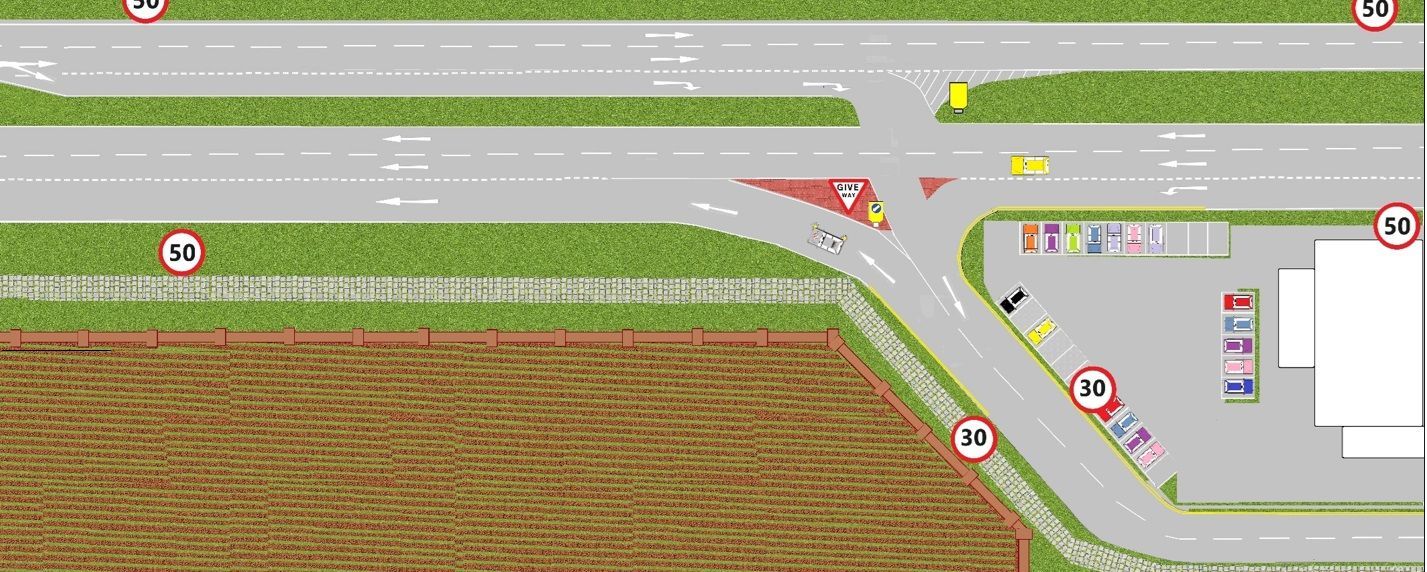
Short slip road
The issue with a short slip road is that the slip road is not long enough to build your speed up and merge on to the carriageway at busy times, so the best thing to do is have early observation using L.A.D.A and if you can see lane 1 is occupied with moving vehicle is to stop on the bend before entering the short slip road (diagram below). Once you can see its safe to emerge use your
mirrors, signal, Manoeuvrer routine
and do not forget to check your blind spot before you entre the carriageway.

Correct position on a short slip road
On a short slip roads you can have good observations (L.A.D.A) to assess if the first lane (lane 1) on the carriageway is safe for you to entre. If both lanes are busy on a short slip road (my advice/technique) is to ether slow down stop just before entering the slip road (position one). This will give you better observations by looking out your drivers window to the right. Position two you are relying on your mirrors more.
Position one

Position two

Turning right over a dual carriageway
When turning right on a dual carriageway you need to incorporate the stopping distances to cross the carriageway.
On some carriageways you can waiting the middle of the carriageway in the safe area until your road is safe on your left.
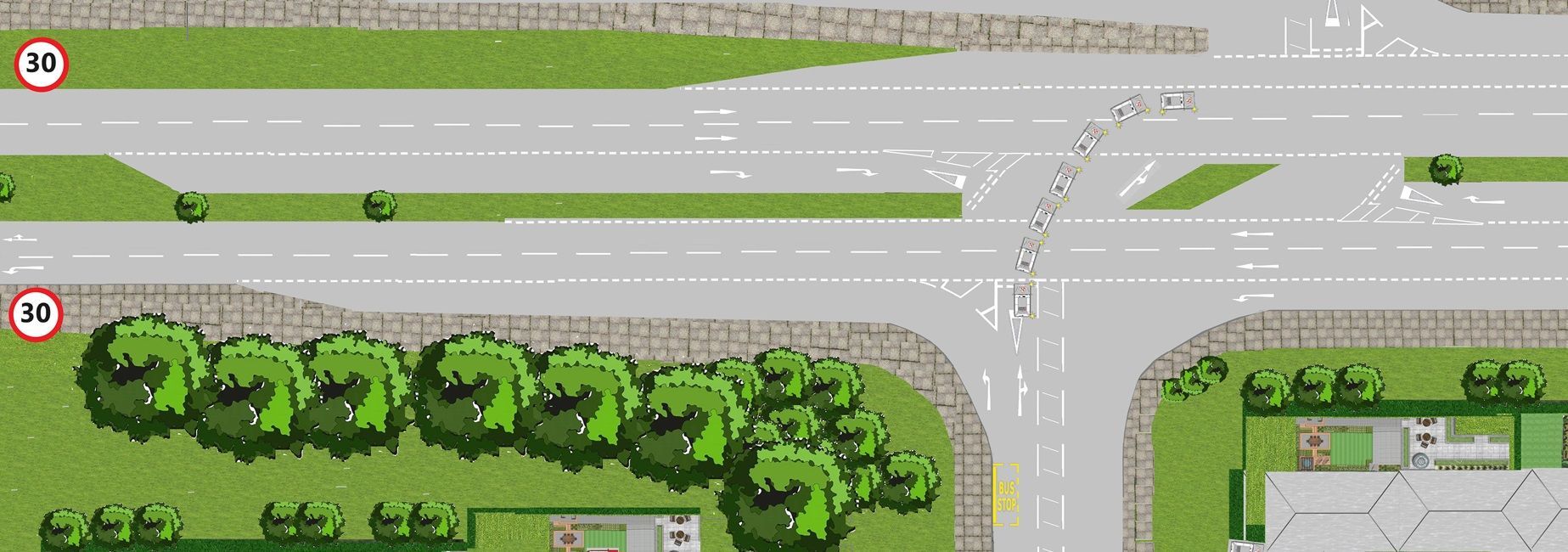
Highway code rule 173 - Dual carriageways
When crossing or turning right, first assess whether the central reservation is deep enough to protect the full length of your vehicle.
- If it is, then you should treat each half of the carriageway as a separate road. Wait in the central reservation until there is a safe gap in the traffic on the second half of the road.
- If the central reservation is too shallow for the length of your vehicle, wait until you can cross both carriageways in one go.

